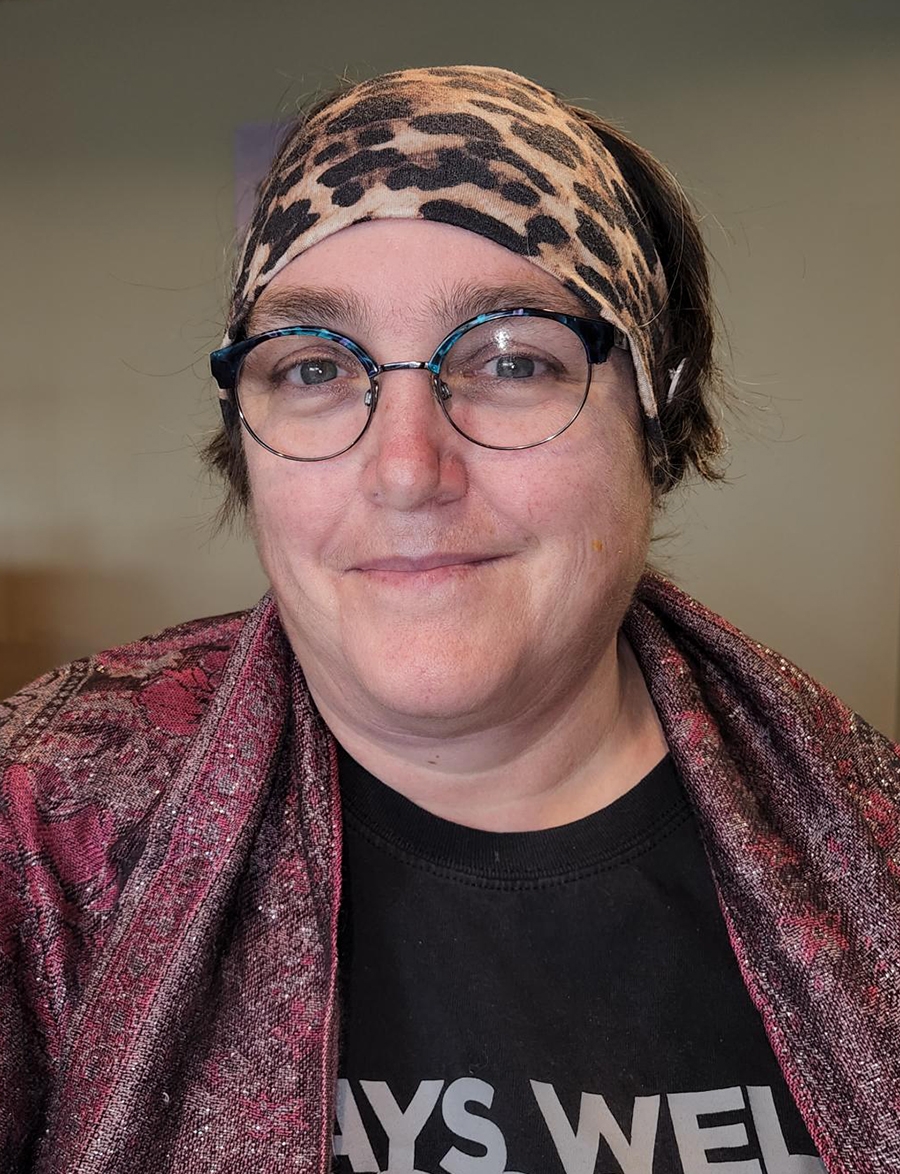SPED Teacher Laura Land Sees Rays of Hope from a New Perspective
Laura Land has come to many Rays of Hope conferences as a special education (SPED) teacher. As someone who works frequently with families with children with disabilities, she has always found the Brain Injury Alliance of Arizona event invigorating, often providing new and thought-provoking insights.
This time, however, she’s getting much more out of the annual gathering, which was in-person this year for the first time since COVID, on a personal level. For the first time, she’s attending as someone who has experienced brain injury four times herself – all within the past year-and-a-half.
Laura has two children on the autism spectrum and a husband with a learning disability, making her no stranger to championing the cause of inclusivity and visibility for those with disabilities that may not be evident from a glance. Now, she is even more conscientious of the fact that disability can happen to anyone, at any time
SPED Teacher Laura Land Sees Rays of Hope from a New Perspective
Laura Land has come to many Rays of Hope conferences as a special education (SPED) teacher. As someone who works frequently with families with children with disabilities, she has always found the Brain Injury Alliance of Arizona event invigorating, often providing new and thought-provoking insights.
This time, however, she’s getting much more out of the annual gathering, which was in-person this year for the first time since COVID, on a personal level. For the first time, she’s attending as someone who has experienced brain injury four times herself – all within the past year-and-a-half.
Laura has two children on the autism spectrum and a husband with a learning disability, making her no stranger to championing the cause of inclusivity and visibility for those with disabilities that may not be evident from a glance. Now, she is even more conscientious of the fact that disability can happen to anyone, at any time
The first of Laura’s accidents occurred when she fell off a chair onto a hard surface. “I wasn’t quite unconscious, but it was like birds were flying around my head,” she recalls. While she didn’t seek help, Laura now believes she probably sustained a concussion.
Six months later, she fell backward off a chair when the wheels got caught on the floor. She hit the back of her head, then started feeling nauseous and dizzy. Bright lights also bothered her. Still, she didn’t visit a doctor.
Three months after that, she had opened the hatchback on her car when it dropped and hit her on the back of her head. The force was so hard, it knocked her into her car. Again, she did not seek medical attention for the injury.
Then, four months before Rays of Hope, she was putting groceries away too quickly in her refrigerator and the door slammed into the back of her head – the same spot where she had received a blow the year before. As a result, she can no longer turn her head quickly while driving or easily adjust to bright light when she steps outside. But she did something different this time.
Laura visited a neurologist and is now awaiting the results of her MRI and EEG scans. Doctors believe she has post-concussive symptoms and are working to treat her migraines and other symptoms.
She has also learned from her experiences and wants to share them with others with any type of brain injury. “I should have listened better [about getting medical care] because we’re all just one head injury away from something bad,” she shares.
Professionally, her perspective has changed as well. “Students with a traumatic brain injury (TBI) tell me how their lives have changed and it’s not just physical. Now I’m more aware and fight harder for my students,” she says. “This goes for understanding their issues with insurance companies and government procedures. For instance, people with TBIs have to pay $450 for an MRI that used to be free.”
Laura has two children on the autism spectrum and a husband with a learning disability, making her no stranger to championing the cause of inclusivity and visibility for those with disabilities that may not be evident from a glance. Now, she is even more conscientious of the fact that disability can happen to anyone, at any time. One big change is that she’s even more aware of her surroundings, including getting up and looking out for edges. “I know I could trip and hit my head again. I need to take care of myself,” Laura acknowledges.
Her renewed attention to detail dovetails nicely with her spiritual aspirations. She is currently a candidate for Deacon in the Methodist Church, having received an MA in Divinity from Claremont School of Theology. This teacher and world traveler is trying to make the church more accessible online for those who can’t attend in person.
After all, helping and caring for others is just another day for Laura as she lives her life mission.
ABOUT BRAIN INJURY ALLIANCE OF ARIZONA
The Brain Injury Alliance of Arizona (BIAAZ) is the only statewide nonprofit organization dedicated to improving the lives of adults and children with all types of brain injuries through prevention, advocacy, awareness and education. BIAAZ also houses the Arizona Brain Health Resource Center, a collection of educational information and neuro-specific resources for brain injury survivors, caregivers, family members and professionals.
What began in 1983 as a grassroots effort has grown into a strong statewide presence, providing valuable life-long resources and community support for individuals with all types of brain trauma at no charge.
The Brain Injury Alliance of Arizona:
- Works with Congressional Brain Injury Task Force
- Houses Arizona Brain Health Resource Center
- Hosts Statewide Opioid Use Disorder & Cognitive Impairment Workgroup
- Has Statewide Opioid Use Disorder & Cognitive Impairment Response team with peer support, training, and family wraparound services
- Facilitates Brain Health Advisory Council
- Manages statewide Neuro Info-Line: 888-500-9165






